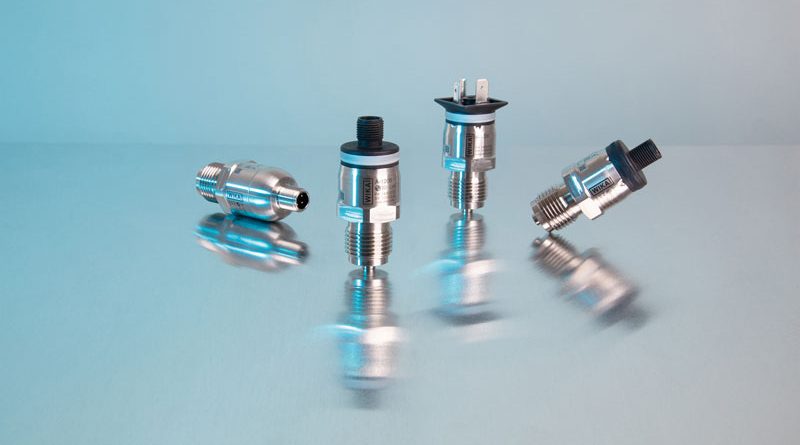For Pressure Measurement in Restricted Space
In case of pressure measurement in restricted space, modules with a compensated output signal make it simpler to integrate into many applications. A close consultation between the supplier and the user is very important. WIKA talks about it
by Ginevra Leonardi
The desire for increased intelligence in products and production networks is creating a demand for components that are simple to integrate even when space is restricted. When it comes to pressure sensors, for instance, manufacturers can choose different configuration levels from simple measuring elements to ready-calibrated sensor modules.
Concepts like “Industry 4.0” and the “Industrial Internet of Things” are on everyone’s lips today; however, long before they were even heard of, a demand existed for pressure measurements in even the most confined spaces. Standard pressure sensors (pressure transmitters) soon reach the limits of what is technically possible here, especially in the OEM industry. That is why companies in this sector cooperate with manufacturers of measurement technology like WIKA, to help them develop individual solutions for specific applications.
The effort for the integration of the measuring element is high
Many of the options so far available in the market start by installing the actual measuring element, in other words a Wheatstone bridge or a strain gauge. However, the effort incurred for integration is relatively high and must be borne by the user. Apart from mechanical aspects, this mainly concerns the electrics: every single sensor element must be measured and calibrated with the aid of the evaluation electronics. For example, the user’s electronics must determine and compensate the zero point and span error of each sensor. The sensor signal must be measured for this purpose both when the system is depressurised and at nominal/working pressure. In either case the signal will deviate from the set point (offset). These measurement errors can be eliminated by means of the evaluation electronics.
Is it possible to choose the ideal solution for every special need
This procedure makes good sense with high volumes because the price per component is often lower. WIKA can then put together the most appropriate test equipment for the different sensor elements, or develop and build complete testing systems for the user’s production process.
If the firm is reluctant to calibrate the sensor in this way during production, pressure sensor modules which supply a standardised and ready-calibrated signal are recommended. Apart from simplifying installation during the product manufacturing process, they also allow quick and easy replacement of the measuring components subsequently in the field should this become necessary. Since a standardised signal is delivered, the sensor can simply be exchanged and does not have to be recalibrated.
Various output signals are available for these pressure sensor modules depending on the requirements. Analogue signals such as 1 … 10 V, 0.5 … 4.5 V ratiometric and 4 … 20 mA are still very common and well-proven in industry. Current signals are far less susceptible to interference than other signal types, and are therefore ideal for cable transmission over long distances or for applications where adverse EMC conditions prevail.
The digital signals benefits
Digital signals, too, are rapidly becoming established alongside analogue. The I²C signal, for instance, which was originally developed for data communication on printed circuit boards, has meanwhile found its way into the world of industrial sensors. This signal has several advantages in specific circumstances – notably adequate EMC protection and a signal line that is not overly long: the current consumption of a sensor module with an I²C signal tends to be significantly less than that of analogue types; extremely short switch-on times are possible; there is no need to convert the analogue signal to a digital signal for further electronic processing; if required, temperature values can also be output in an I²C data protocol in addition to pressure values.
Furthermore, a low-power version of pressure sensors can be implemented using the I²C signal. This version represents a promising alternative, especially for battery-powered applications. In applications like autonomous data loggers with wireless transmission, battery replacements need to be restricted to a minimum and energy-efficient operation of the pressure sensor is hence vital, just as it is with any other component in the finished product.
A compact type of construction with flexible connections is needed
As well as a suitable output signal, a compact type of construction with flexible connections is important for sensor integration. By now, at the latest, it should be absolutely clear that not only the dimensions but also the sophisticated functionality of standard pressure sensors run counter to integration requirements in terms of both design and economics. For example, the need for high IP protection or for EMC protection should be questioned if the sensor is installed in a hermetically sealed housing anyway, with short cable connections to the electronics. And since pressure sensor modules are classed as components exactly like a pressure sensor elements, a CE declaration of conformity is not mandatory; only the finished end product normally has a CE marking.
Consultation between suppliers and users is very important
Based on past experience, close consultation between the sensor supplier and the user is essential when searching for the best way to integrate a pressure measurement. Both sides must be willing and able to adapt if a wish list is to be transformed into a measurement solution that meets all requirements, and is optimally equipped for the challenges of the digital future. To achieve this, WIKA proposes Value Innovation Workshops, where the company’s experts get together with users to consider which aspects of the specification really are relevant and which of the potential alternatives is accordingly the best suited from both a technical and a commercial point of view.

